Non-Coaxially Rotating Motion in Casson Martial along with Temperature and Concentration Gradients via First-Order Chemical Reaction
Abstract
:1. Introduction
2. Physical Model and Mathematical Modeling
3. Exact Solution by Laplace Transform Method
4. Results and Discussion
5. Conclusions
- Particle motion becomes slowed down against the intensity of magnetic fields;
- The impact of buoyant force on primary velocity is opposite to the effect of buoyancy on the secondary velocity;
- Applications of non-coaxial rotation motion are found in food processing and engineering processes, jut engines, pump cleaners, vacuum cleaners and geophysical flows;
- TBL (thermal boundary layers) decrease with enhancement in Prandtl number and
- Production into thermal energy is declined when thermal radiation is enhanced;
- Growth of layers associated with solute particles is significant against higher values of Soret number but the opposite role in solute particles is observed for values of the Schmidt number;
- The opposite trend in solute particles is noticed for dual behavior of chemical reactions.
Author Contributions
Funding
Institutional Review Board Statement
Informed Consent Statement
Data Availability Statement
Acknowledgments
Conflicts of Interest
Nomenclature
| Symbols | Used for |
| Magnitude of magnetic induction | |
| Specific heat at constant pressure | |
| Concentration field | |
| Concentration at the sheet/wall | |
| Ambient concentration | |
| Thermal conductivity of fluid | |
| Chemical reaction rate constant | |
| Ambient thermal conductivity | |
| Characteristic length | |
| Hartmann number | |
| Velocity components in x and y directions | |
| Fluid velocity vector | |
| Wall velocity in y-direction | |
| Reference velocity in y-direction | |
| Space coordinates | |
| Coefficient of mass diffusivity | |
| Prandtl number | |
| Soret number | |
| Gravitation force | |
| Viscosity of the fluid | |
| Density of fluid | |
| Fluid | |
| ODEs | Ordinary differential equations |
| Pressure | |
| Yield stress | |
| PDEs | Partial differential equations |
| Dimensionless velocity | |
| Heat flux vector | |
| Radiative heat flux vector | |
| Dimensionless velocity | |
| Schmidt number | |
| Time | |
| Wall temperature | |
| Reference temperature | |
| Ambient temperature | |
| Dimensionless concentration | |
| Temperature field | |
| Grashof number | |
| Casson fluid parameter | |
| Chemical reaction parameter | |
| Independent variable | |
| Kinematics viscosity | |
| Wall | |
| Ambient state |
References
- Erdogan, M.E. Unsteady flow of a viscous fluid due to non-coaxial rotations of a disk and a fluid at infinity. Int. J. Non-Linear Mech. 1997, 32, 285–290. [Google Scholar] [CrossRef]
- Ersoy, H.V. MHD flow of an Oldroyd-B fluid due to non-coaxial rotations of a porous disk and the fluid at infinity. Int. J. Eng. Sci. 2000, 38, 1837–1850. [Google Scholar] [CrossRef]
- Hayat, T.; Asghar, S.; Siddiqui, A.M.; Haroon, T. Unsteady MHD flow due to non-coaxial rotations of a porous disk and a fluid at infinity. Acta Mech. 2001, 151, 127–134. [Google Scholar] [CrossRef]
- Hayat, T.; Mumtaz, S.; Ellahi, R. MHD unsteady flows due to non-coaxial rotations of a disk and a fluid at infinity. Acta Mech. Sin. 2003, 19, 235–240. [Google Scholar] [CrossRef]
- Hayat, T.; Zamurad, M.; Asghar, S.; Siddiqui, A.M. Magnetohydrodynamic flow due to non-coaxial rotations of a porous oscillating disk and a fluid at infinity. Int. J. Eng. Sci. 2003, 41, 1177–1196. [Google Scholar] [CrossRef]
- Hayat, T.; Wang, Y. Magnetohydrodynamic flow due to noncoaxial rotations of a porous disk and a fourth-grade fluid at infinity. Math. Probl. Eng. 2003, 2003, 47–64. [Google Scholar] [CrossRef]
- Hayat, T.; Ellahi, R.; Asghar, S. Unsteady periodic flows lows of a magnetohydrodynamic fluid due to noncoxial rotations of a porous disk and a fluid at infinity. Math. Comput. Model. 2004, 40, 173–179. [Google Scholar] [CrossRef]
- Hayat, T.; Ellahi, R.; Asghar, S.; Siddiqui, A. Flow induced by non-coaxial rotation of a porous disk executing non-torsional oscillations and a second grade fluid rotating at infinity. Appl. Math. Model. 2004, 28, 591–605. [Google Scholar] [CrossRef]
- Hayat, T.; Ellahi, R.; Asghar, S. Unsteady magnetohydrodynamic non-Newtonian flow due to non-coaxial rotations of disk and a fluid at infinity. Chem. Eng. Commun. 2007, 194, 37–49. [Google Scholar] [CrossRef]
- Asghar, S.; Hanif, K.; Hayat, T. The effect of the slip condition on unsteady flow due to non-coaxial rotations of disk and a fluid at infinity. Meccanica 2007, 42, 141–148. [Google Scholar] [CrossRef]
- Wang, Y.; Wu, W. Time-dependent magnetohydrodynamic flow induced by non-coaxial rotations of a non-torsionally oscillating porous plate and a third-order fluid at infinity. Math. Comput. Model. 2007, 46, 1277–1293. [Google Scholar] [CrossRef]
- Asghar, S.; Hanif, K.; Hayat, T.; Khalique, C.M. MHD non-Newtonian flow due to non-coaxial rotations of an accelerated disk and a fluid at infinity. Commun. Nonlinear Sci. Numer. Simul. 2007, 12, 465–485. [Google Scholar] [CrossRef]
- Lashkari, A.; Latifi, M. A non-coaxial constitutive model for sand deformation under rotation of principal stress axes. Int. J. Numer. Anal. Methods Géoméch. 2008, 32, 1051–1086. [Google Scholar] [CrossRef]
- Guria, M.; Kanch, A.K.; Das, S.; Jana, R.N. Effects of Hall current and slip condition on unsteady flow of a viscous fluid due to non-coaxial rotation of a porous disk and a fluid at infinity. Meccanica 2010, 45, 23–32. [Google Scholar] [CrossRef]
- Chamkha, A.J.; Dogonchi, A.S.; Ganji, D.D. Magneto-hydrodynamic flow and heat transfer of a hybrid nanofluid in arotating system among two surfaces in the presence of thermal radiation and Joule heating. AIP Adv. 2019, 9, 025103. [Google Scholar] [CrossRef] [Green Version]
- Dogonchi, A.S.; Chamkha, A.J.; Hashemi-Tilehnoee, M.; Seyyedi, S.M.; Haq, R.U.; Ganji, D.D. Effects of homogeneous-heterogeneous reactions and thermal radiation on magneto-hydrodynamic Cu-water nanofluid flow over an expanding flat plate with non-uniform heat source. J. Cent. South Univ. 2019, 26, 1161–1171. [Google Scholar] [CrossRef]
- Hayat, T.; Saeed, Y.; Asad, S.; Alsaedi, A. Convective heat and mass transfer in flow by an inclined stretching cylinder. J. Mol. Liq. 2016, 220, 573–580. [Google Scholar] [CrossRef]
- Saleem, S.; Al-Qarni, M.M.; Nadeem, S.; Sandeep, N. Convective heat and mass transfer in magneto Jeffrey fluid flow on a rotating cone with heat source and chemical reaction. Commun. Theor. Phys. 2018, 70, 534. [Google Scholar] [CrossRef]
- Nawaz, M.; Saleem, S.; Rana, S. Computational study of chemical reactions during heat and mass transfer in magnetized partially ionized nanofluid. J. Braz. Soc. Mech. Sci. Eng. 2019, 41, 326. [Google Scholar] [CrossRef]
- Saleem, S.; Firdous, H.; Nadeem, S.; Khan, A.U. Convective Heat and Mass Transfer in Magneto Walter’s B Nanofluid Flow Induced by a Rotating Cone. Arab. J. Sci. Eng. 2019, 44, 1515–1523. [Google Scholar] [CrossRef]
- Yavuz, M.; Sene, N. Approximate Solutions of the Model Describing Fluid Flow Using Generalized ρ-Laplace Transform Method and Heat Balance Integral Method. Axioms 2020, 9, 12. [Google Scholar] [CrossRef]
- Alquran, M.; Ali, M.; Alsukhour, M.; Jaradat, I. Promoted residual power series technique with Laplace transform to solve some time-fractional problems arising in physics. Results Phys. 2020, 19, 103667. [Google Scholar] [CrossRef]
- Hafeez, M.B.; Amin, R.; Nisar, K.S.; Jamshed, W.; Abdel-Aty, A.-H.; Khashan, M.M. Heat transfer enhancement through nanofluids with applications in automobile radiator. Case Stud. Therm. Eng. 2021, 27, 101192. [Google Scholar] [CrossRef]
- Guria, M. Unsteady MHD flow due to non-coaxial rotations of a porous disk and a fluid at infinity subjected to a periodic suction. Int. J. Appl. Mech. Eng. 2018, 23, 623–633. [Google Scholar] [CrossRef]
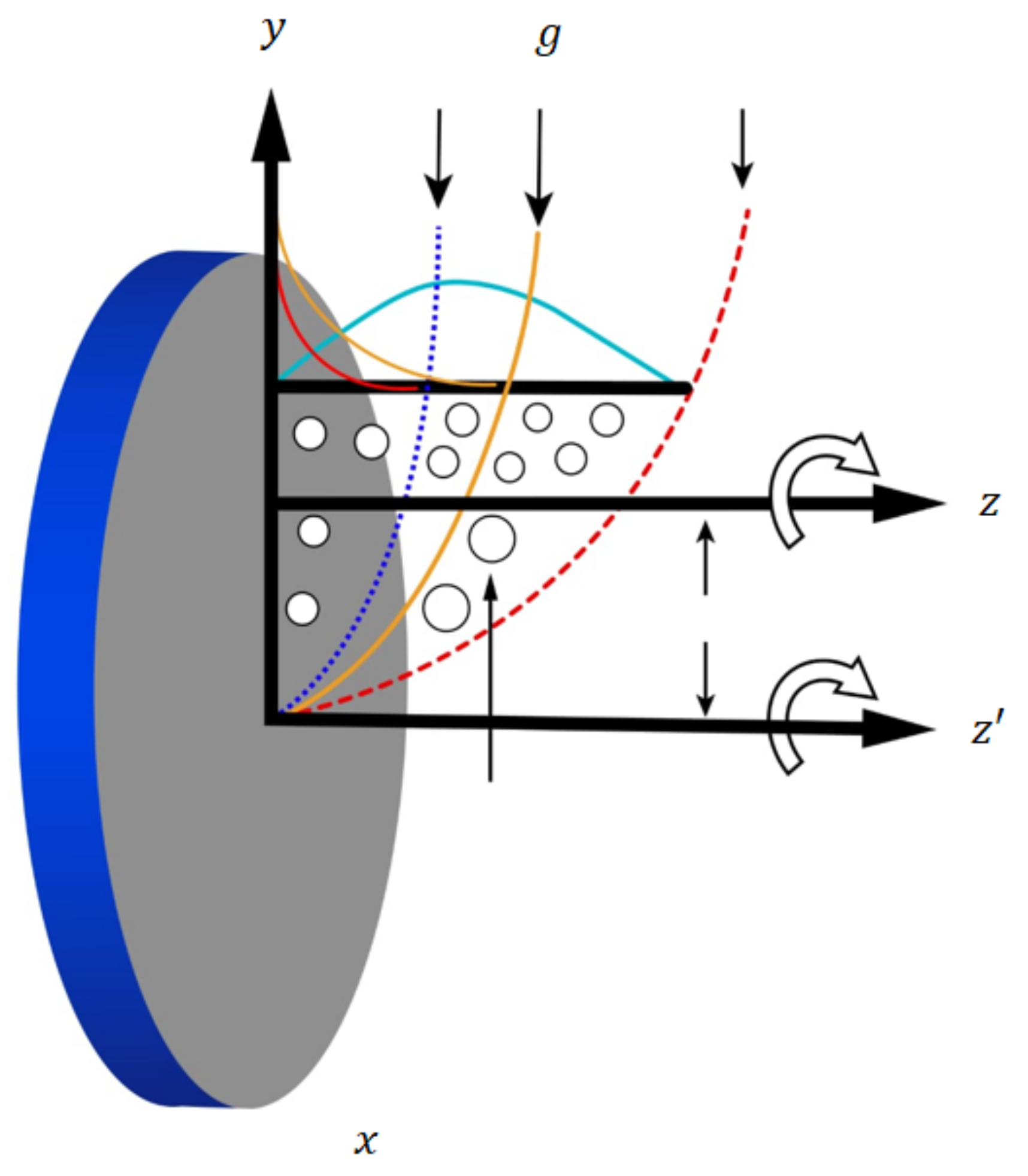


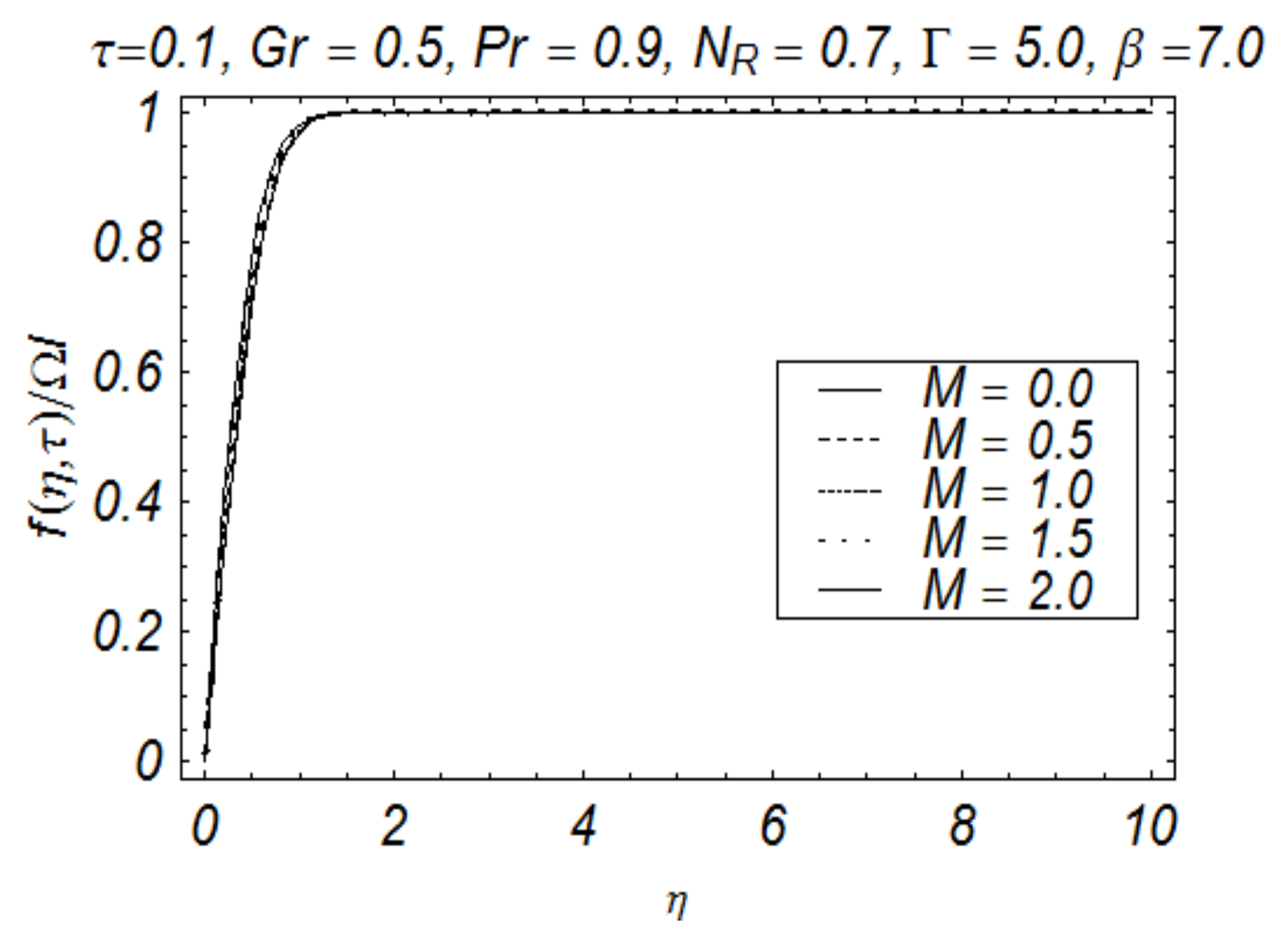

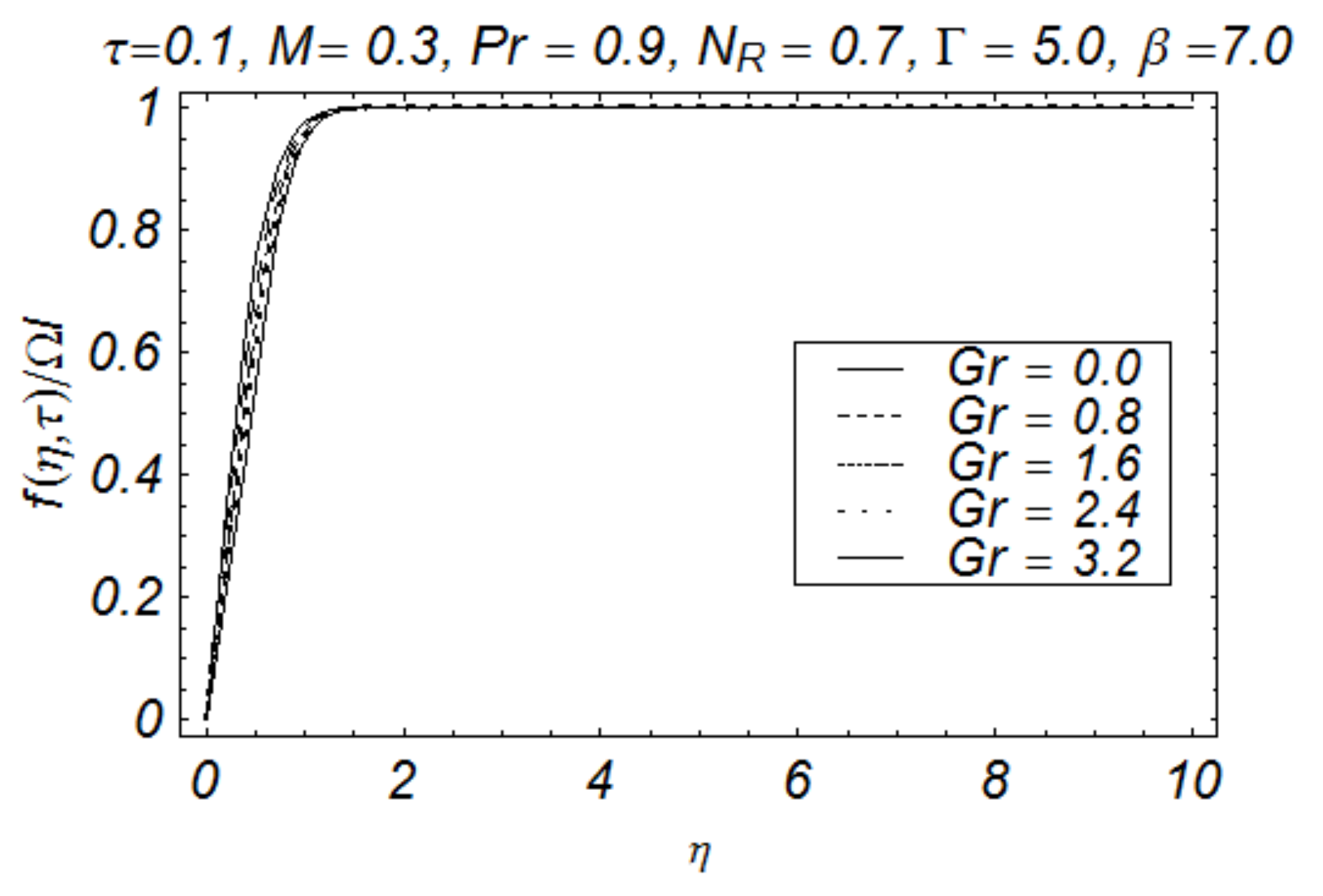
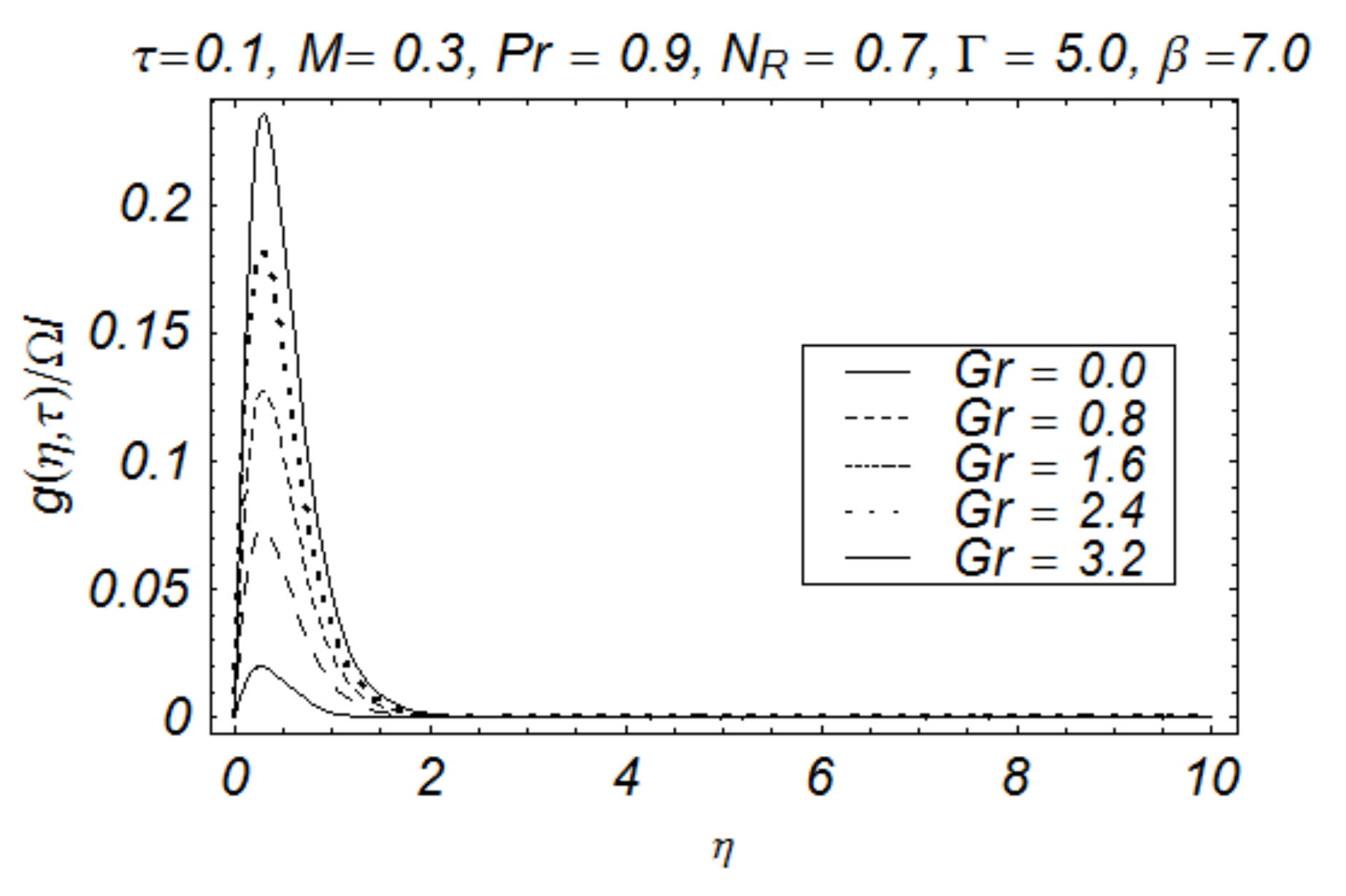
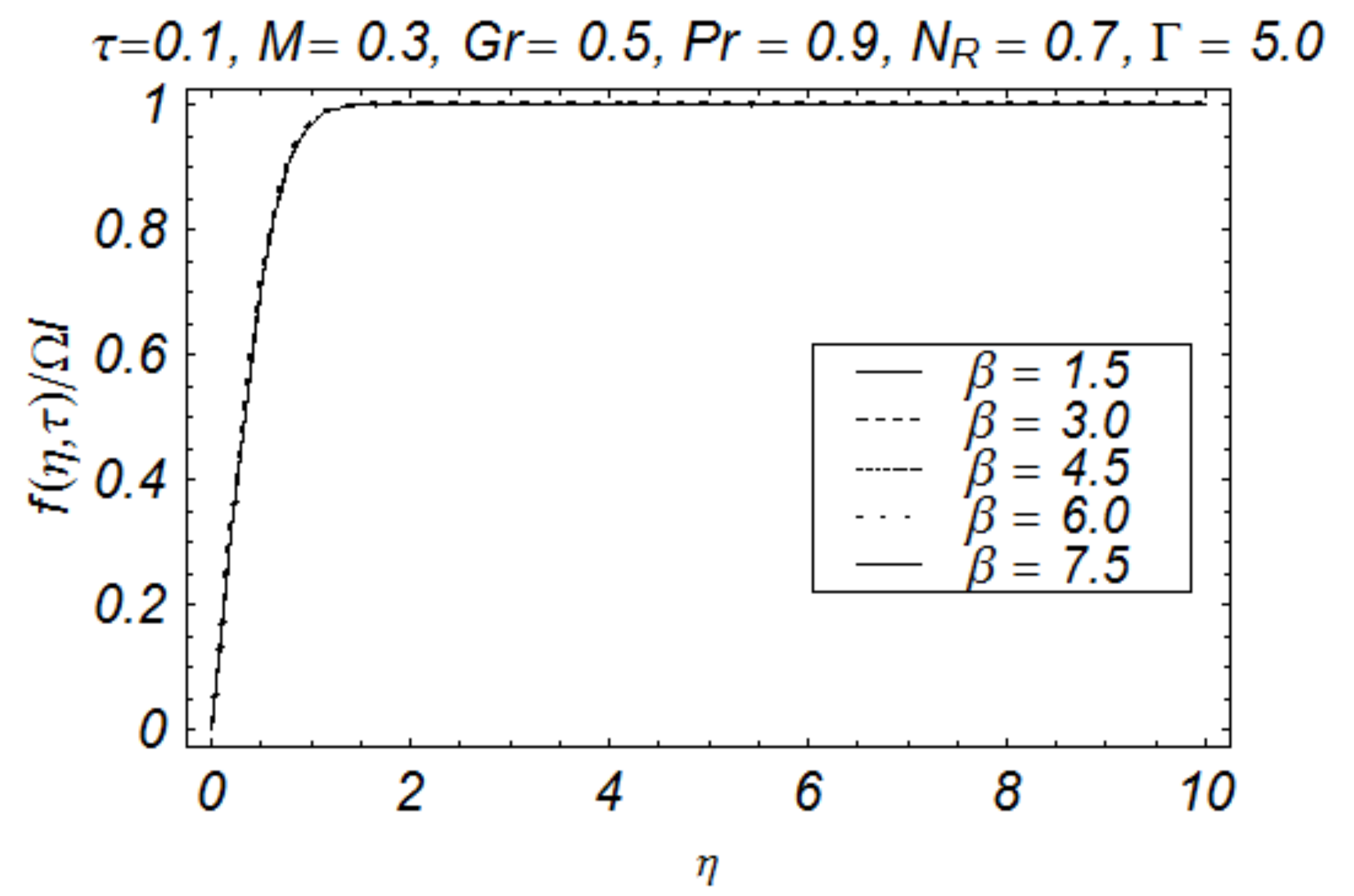
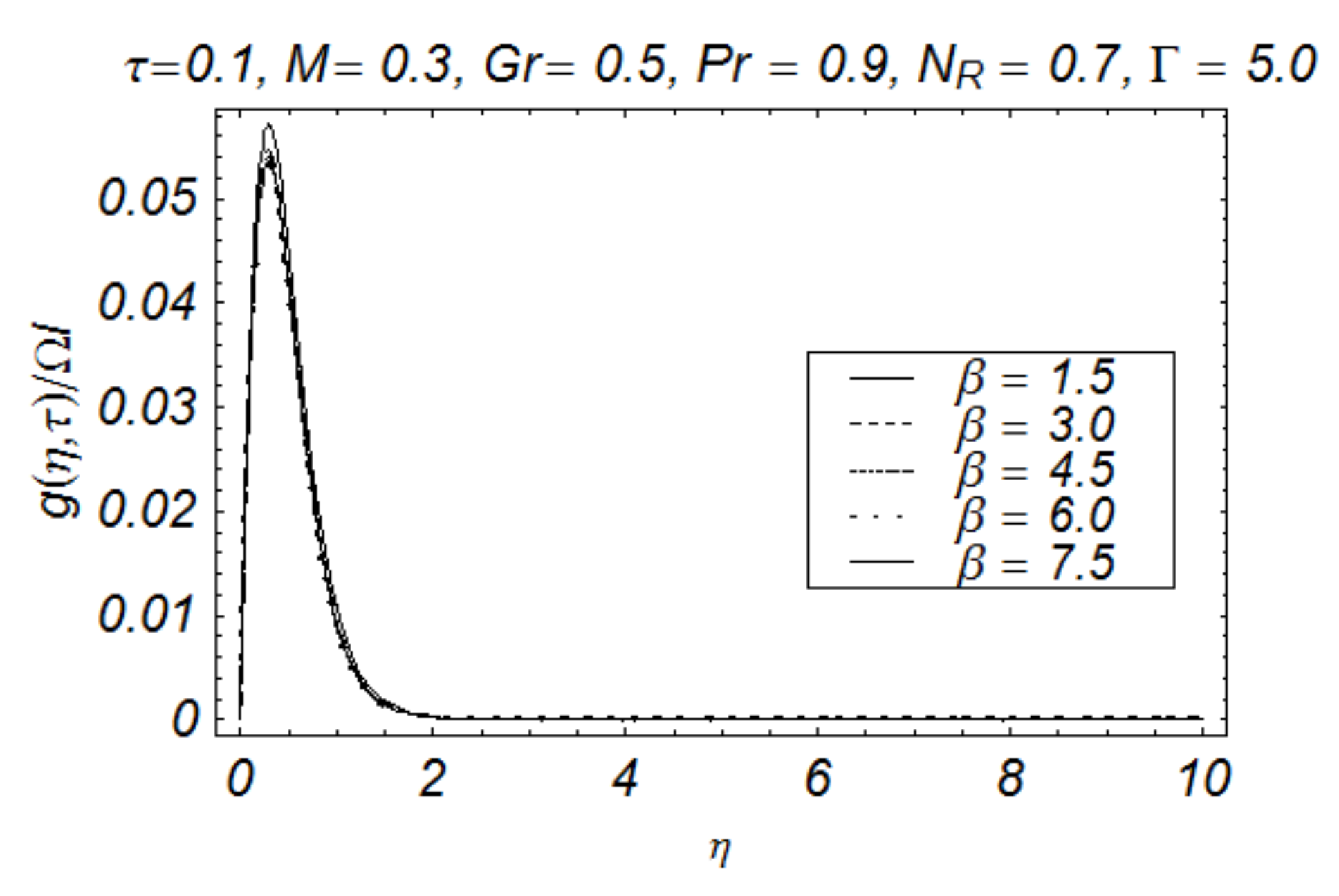
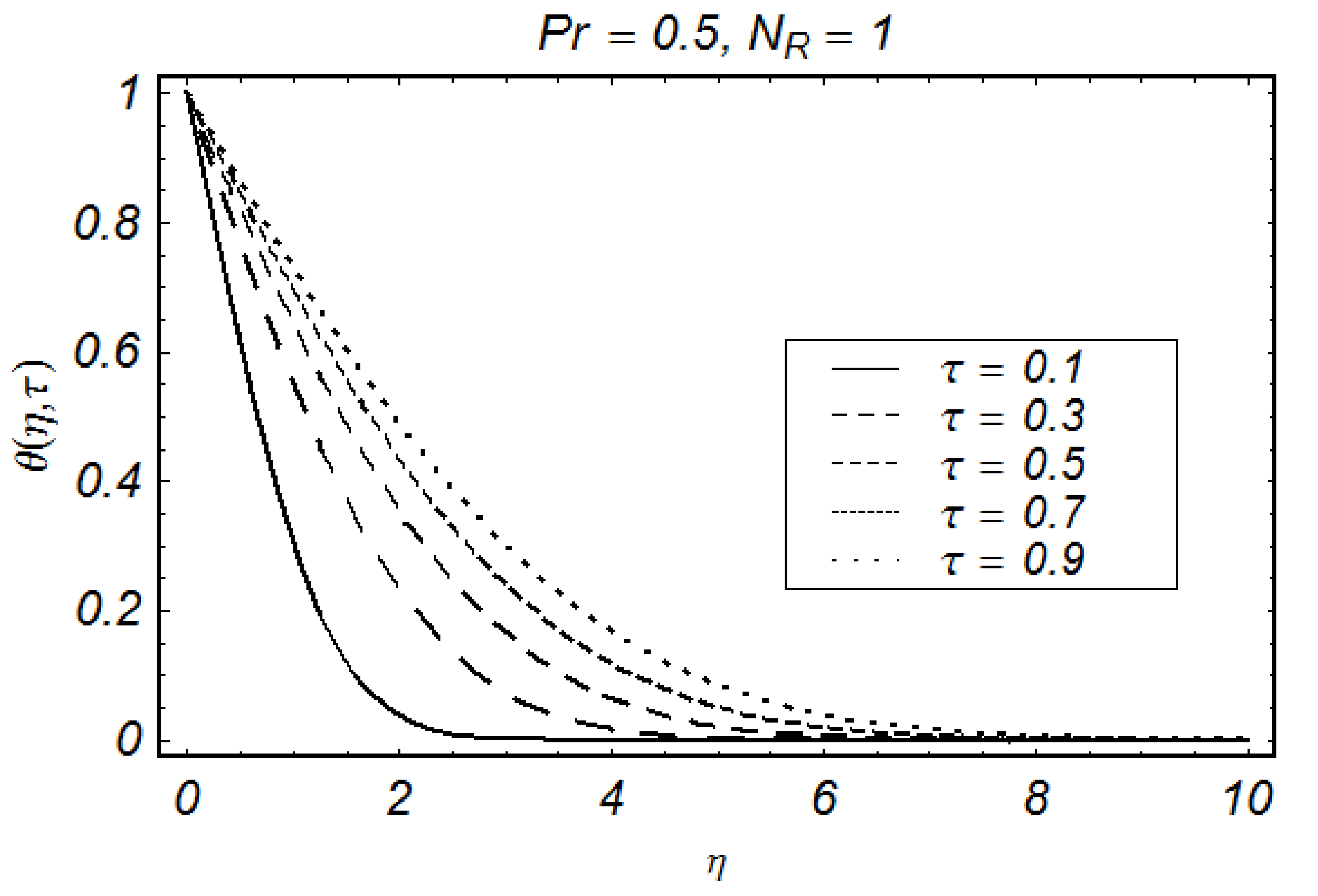
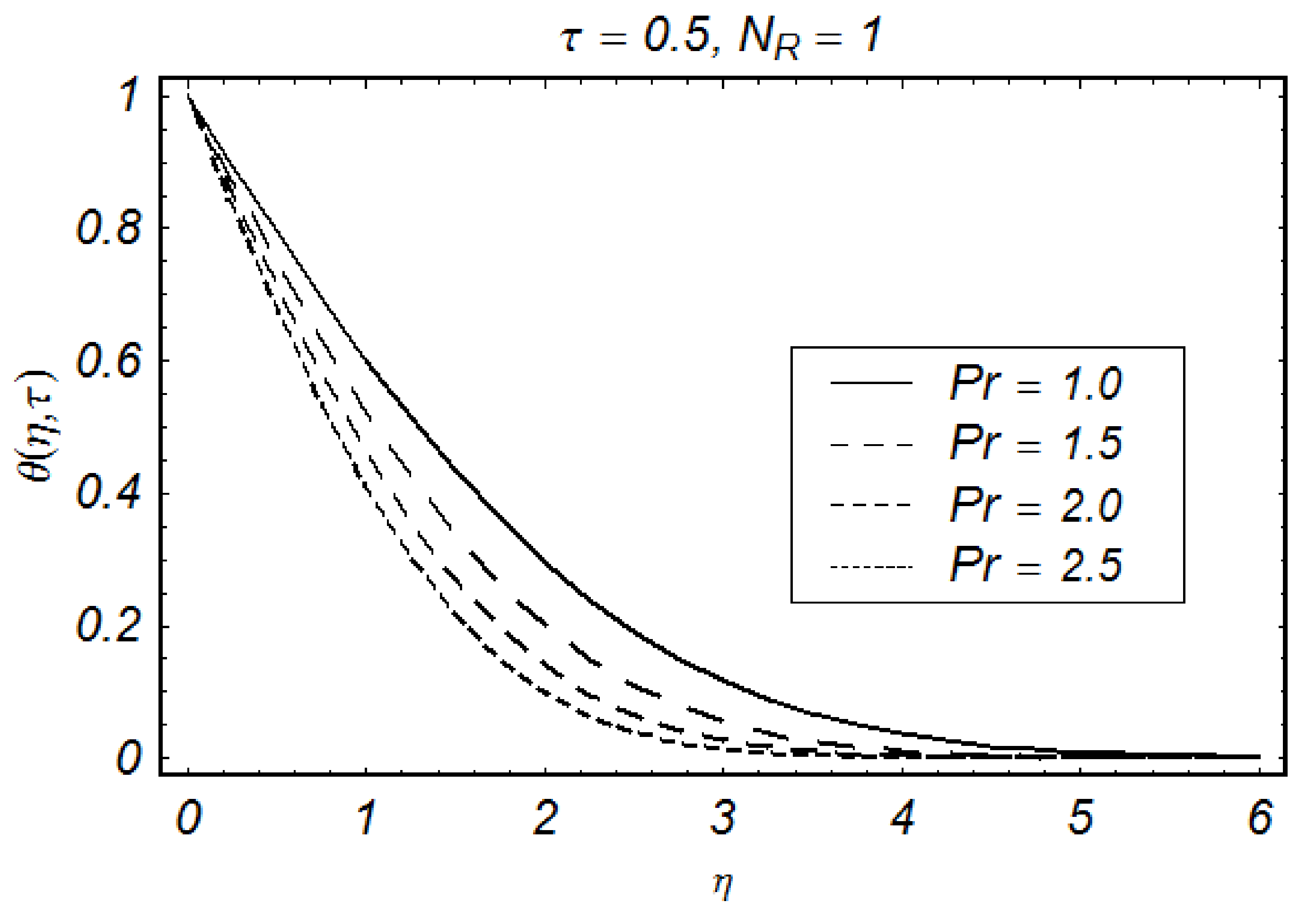


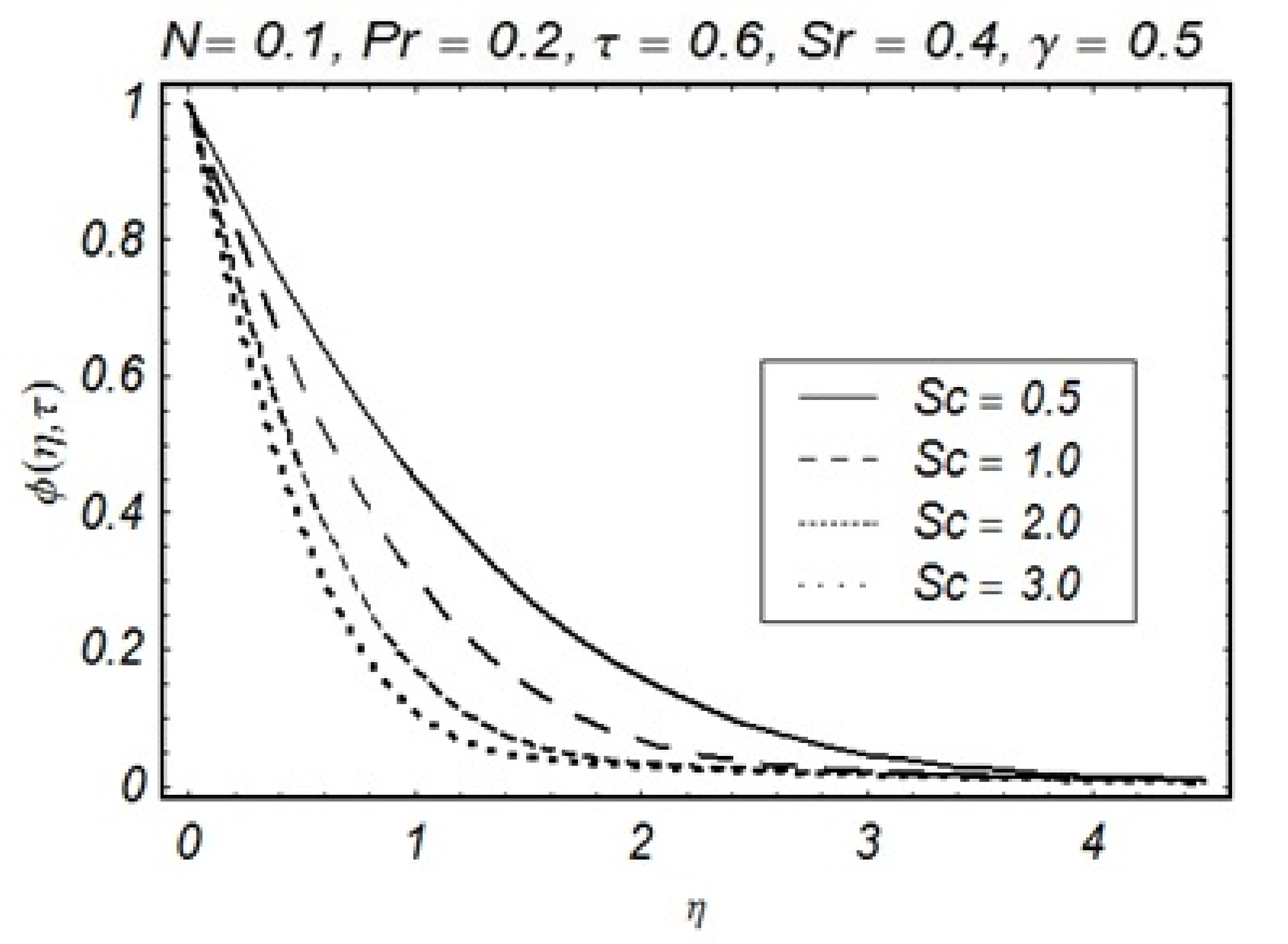
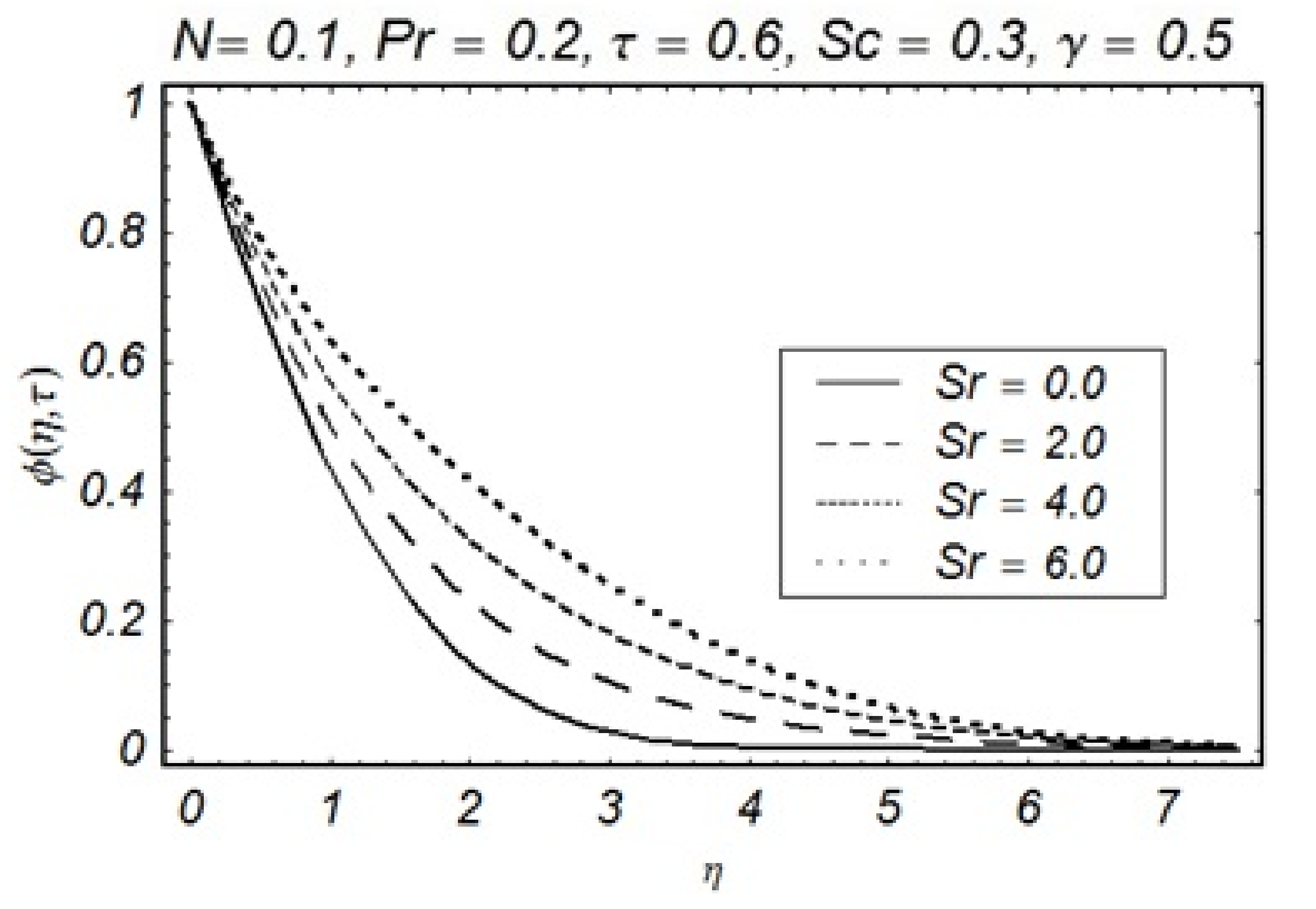

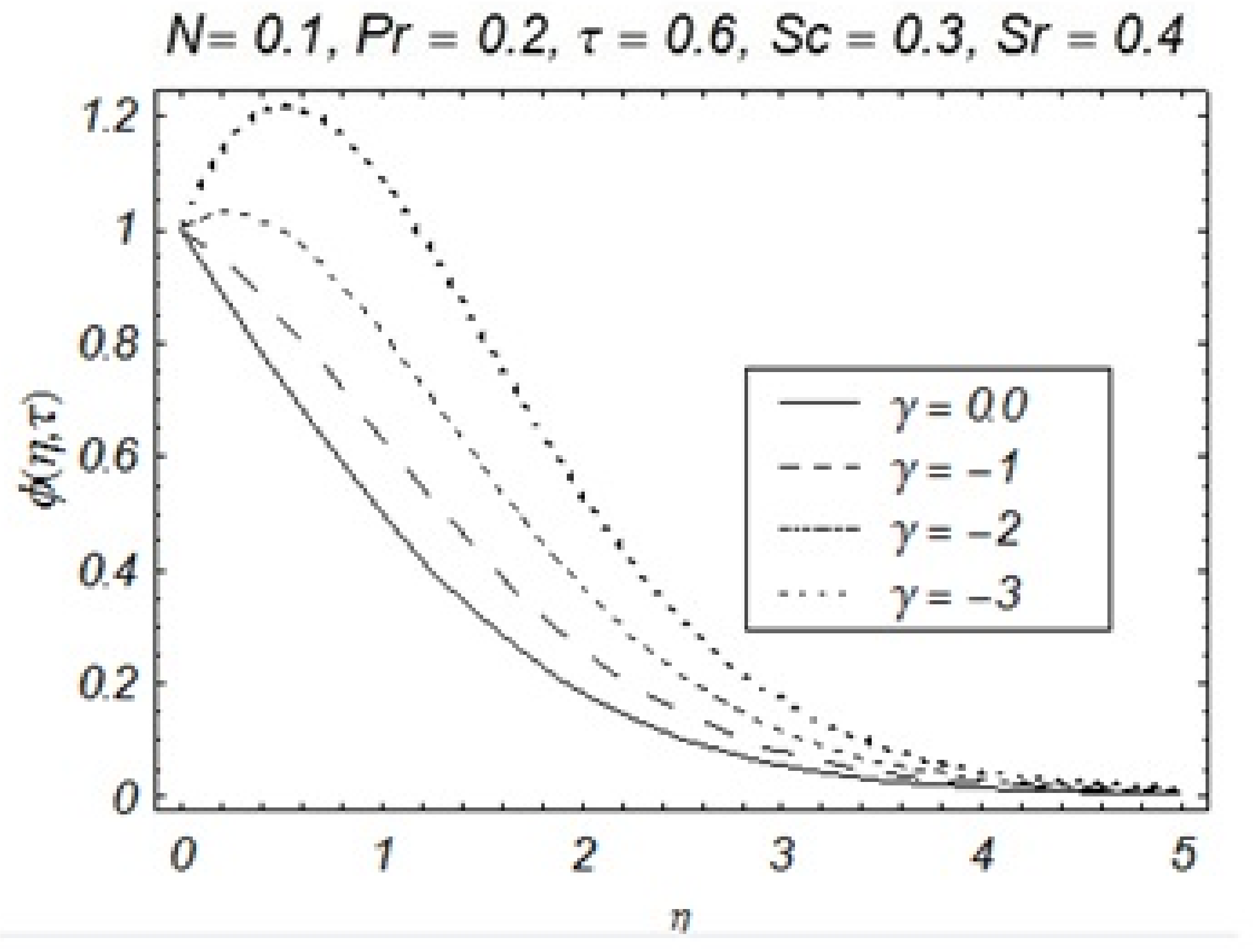
Publisher’s Note: MDPI stays neutral with regard to jurisdictional claims in published maps and institutional affiliations. |
© 2021 by the authors. Licensee MDPI, Basel, Switzerland. This article is an open access article distributed under the terms and conditions of the Creative Commons Attribution (CC BY) license (https://creativecommons.org/licenses/by/4.0/).
Share and Cite
Jabbar, N.; Hafeez, M.B.; Askar, S.; Nazir, U. Non-Coaxially Rotating Motion in Casson Martial along with Temperature and Concentration Gradients via First-Order Chemical Reaction. Energies 2021, 14, 7784. https://doi.org/10.3390/en14227784
Jabbar N, Hafeez MB, Askar S, Nazir U. Non-Coaxially Rotating Motion in Casson Martial along with Temperature and Concentration Gradients via First-Order Chemical Reaction. Energies. 2021; 14(22):7784. https://doi.org/10.3390/en14227784
Chicago/Turabian StyleJabbar, Noman, Muhammad Bilal Hafeez, Sameh Askar, and Umar Nazir. 2021. "Non-Coaxially Rotating Motion in Casson Martial along with Temperature and Concentration Gradients via First-Order Chemical Reaction" Energies 14, no. 22: 7784. https://doi.org/10.3390/en14227784
APA StyleJabbar, N., Hafeez, M. B., Askar, S., & Nazir, U. (2021). Non-Coaxially Rotating Motion in Casson Martial along with Temperature and Concentration Gradients via First-Order Chemical Reaction. Energies, 14(22), 7784. https://doi.org/10.3390/en14227784





